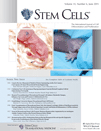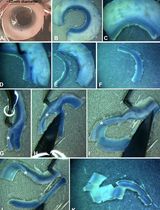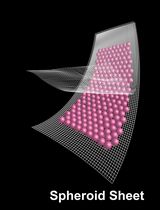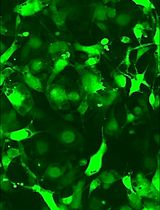- EN - English
- CN - 中文
Preparation of Synovial Mesenchymal Stem Cells from a Rat Knee Joint
从大鼠膝关节制备滑膜间充质干细胞
发布: 2016年05月05日第6卷第9期 DOI: 10.21769/BioProtoc.1799 浏览次数: 10146
评审: Hui ZhuAnonymous reviewer(s)
Abstract
Mesenchymal stem cells (MSCs), first described in human bone marrow, are emerging as promising cell-based therapeutics for a wide range of diseases (Caplan and Correa, 2011). MSCs have been isolated from various organs in the body, and synovial MSCs were first reported by De Bari et al. (2001). We previously reported that synovial MSCs have superior proliferation and chondrogenic potentials as compared to bone marrow-, muscle-, and adipose- derived MSCs in humans (Sakaguchi et al., 2005) and rats (Yoshimura et al., 2007). In addition, administration of synovial MSCs for osteochondral defect promoted cartilage regeneration in a rabbit (Koga et al., 2008) and a pig model (Nakamura et al., 2012). In 2008, we started a clinical trial in human and obtained satisfactory results of symptoms and regenerated cartilage by Magnetic Resonance Imaging (Sekiya et al., 2015). We have also engaged in multiple research lines using synovial MSCs for meniscus regeneration in rats (Horie et al., 2009; Horie et al., 2012; Katagiri et al., 2013; Okuno et al., 2014; Ozeki et al., 2015). In this article, we demonstrated how to harvest the synovium including infrapatellar fat pad from a rat knee joint, and to describe the technique of isolation and culture of rat synovial MSCs.
Keywords: Synovium (滑膜)Materials and Reagents
- Culture dish (culture area: 56.7 cm2, diameter: 100 mm) (Thermo Fisher Scientific, catalog number: 150350 )
- Cell strainer (70 µm) (VWR International, Greiner Bio-One GmbH, catalog number: 89508-344 )
- Clip (Mitsuya, catalog number: GM-590 ) cut by pliers in a half size (Figure 1B)
- Styrene foam (RIKAKEN) (Figure 1C)
- 50 ml Falcon tube (Corning, catalog number: 352070 )
- 8-12 weeks old Lewis rat (Charles River Laboratories International)
- Collagenase V (Wako Pure Chemical Industries, catalog number: 038-17851 )
- α-minimal essential medium (α-MEM) (Thermo Fisher Scientific, catalog number: 12561-056 )
- Fetal bovine serum (FBS) (Thermo Fisher Scientific, catalog number: 12483-020 )
- Streptomycin, Penicillin, Amphotericin B (Antibiotic-Antimycotic, 100x) (Thermo Fisher Scientific, Gibco™, catalog number: 15240-062 )
- Phosphate buffer saline (PBS) (Thermo Fisher Scientific, Gibco™, catalog number: 14190-235 )
- α-MEM containing 10% FBS with antibiotics (see Recipes)
- 3 mg/ml Collagenase solution (for synovium from both knee joints) (see Recipes)
Equipment
- 37 degree, 5% CO2 forced-air incubator (ASTEC, catalog number: SCA-165DS )
- Centrifuge machine (KUBOTA Corporation, model: Model 8730 )
- Scalpel holder (Natsume, catalog number: No.3 D-11 ) with blade (Natsume, catalog number: No.11 D-13 ), scissors (Natsume, catalog number: B-12 ), and tweezers (Natsume, catalog number: A-6 ) (Figure 1A)
Procedure
文章信息
版权信息
© 2016 The Authors; exclusive licensee Bio-protocol LLC.
如何引用
Ozeki, N., Muneta, T., Mizuno, M. and Sekiya, I. (2016). Preparation of Synovial Mesenchymal Stem Cells from a Rat Knee Joint. Bio-protocol 6(9): e1799. DOI: 10.21769/BioProtoc.1799.
分类
干细胞 > 成体干细胞 > 间充质干细胞
您对这篇实验方法有问题吗?
在此处发布您的问题,我们将邀请本文作者来回答。同时,我们会将您的问题发布到Bio-protocol Exchange,以便寻求社区成员的帮助。
Share
Bluesky
X
Copy link
















